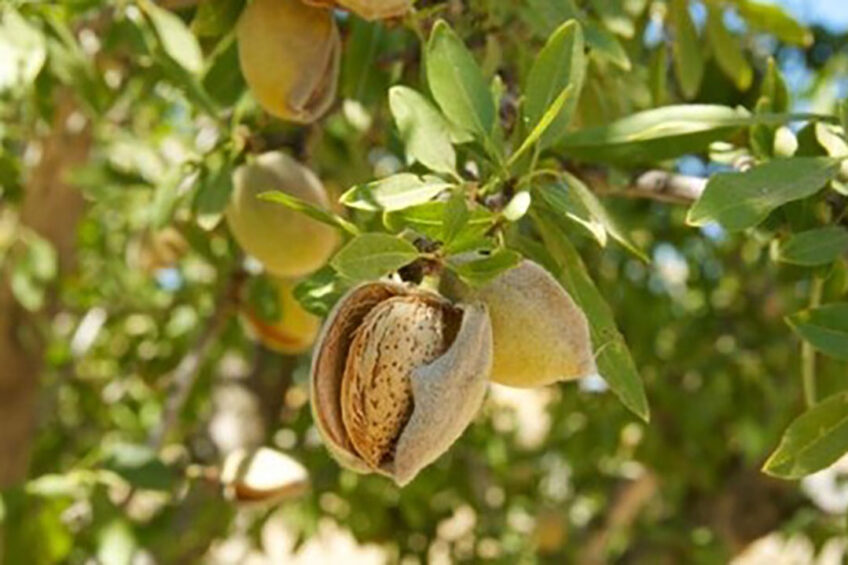Almond hulls support high performance in dairy cows

Researchers at the University of California found the feeding of almond hulls beneficial to lactating dairy cows. They demonstrated that almond hulls fed to lactating dairy cows at varying amounts (up to 20% of the diet) can support high levels of milk production.
Almond hulls, a by-product from the harvesting process of almond nuts, contributes 50% of the total weight of almonds before processing. Almond hulls are high in sugars and NDF but low in protein content. Much of the NDF in the hulls can be degraded by ruminant microbes, as it contains low lignin content.
In addition to NDF, almond hulls supply ruminants with an excellent source of highly fermentable carbohydrates in the form of sucrose, fructose, glucose, inositol, and sorbitol. This high content of fermentable carbohydrates could make almond hulls a good (and relatively cheap) substitute for concentrate ingredients such as corn. In addition, almond hulls can easily be dried during the harvesting process, making them an easy feed to store for dairies.
Inclusion of almond hulls
The potential of feeding varying amounts of almond hulls to lactating dairy cows was investigated using 12 Holstein cows with 4 primiparous and 8 multiparous cows. The dietary treatments were 4 total mixed rations containing 0, 7, 13, or 20% almond hulls.
The aim of this study was to determine whether almond hulls could be fed in varying amounts as a replacement for corn and soy hulls in a lactating cow diet to support production performance and digestibility and whether changes in production occur with different almond hulls levels substituted for concentrates.
Milk yield and composition
In the current study, almond hulls replaced concentrate ingredients and not the forage ingredients. Researchers found that the yield of total solids including lactose and fat was not different between the almond-free diets and the almonds diets, but fat percentage increased linearly with inclusion of almond hulls.
The increase in fat was attributed to the easily fermentable carbohydrates such as pectin that can increase acetate and butyrate production. The highest fat percentage was observed with the highest level of almonds inclusion (20% level). Overall, all the inclusion levels maintained high cow performance as there were no significant differences in most of the components measured.
Nutrient digestibility
The research team from the University of California found the apparent digestibility of DM, OM, ADF, and CP increasing with increasing amount of almond hulls in the diet. The DM and OM apparent digestibilities ranged from 69 to 76%. The increase in digestibility was attributed to the NFC content which is highly fermentable by rumen microorganisms – increased substrate availability contributes to microbial growth, increasing fermentation which in turn could potentially increase fibre digestibility.
“Overall, the high sugar content and large particle size of the almond hulls could have resulted in the higher DM and ADF digestibility along with an increase in milk fat percentage and an increase in rumination and eating time seen in the cows in this study,” the researchers said.
Variation in nutrient composition
According to the researchers, the findings from this study indicate that almond hulls can be fed as a concentrate supplement up to 20% of the diet to potentially help improve milk fat percentage and DM digestibility, although milk protein could decrease.
“To be specific, including almond hulls at 7% of the diet could help optimise DMI and milk, protein, and fat yields,” they said. They also warned that responses to feeding high amounts of almond hulls may differ in practice because the compositional quality of almond hulls can vary greatly and component digestibilities can differ if different basal forages are used.
They added that, when traditional concentrate ingredients (e.g., steam-flaked corn) become expensive, the economics for dairy producers to feed higher amounts of almond hulls could be considered, and that the study could provide guidance for producers and nutritionists on how different levels of almond hulls affect production performance for lactating cows.
Join 13,000+ subscribers
Subscribe to our newsletter to stay updated about all the need-to-know content in the dairy sector, two times a week.










